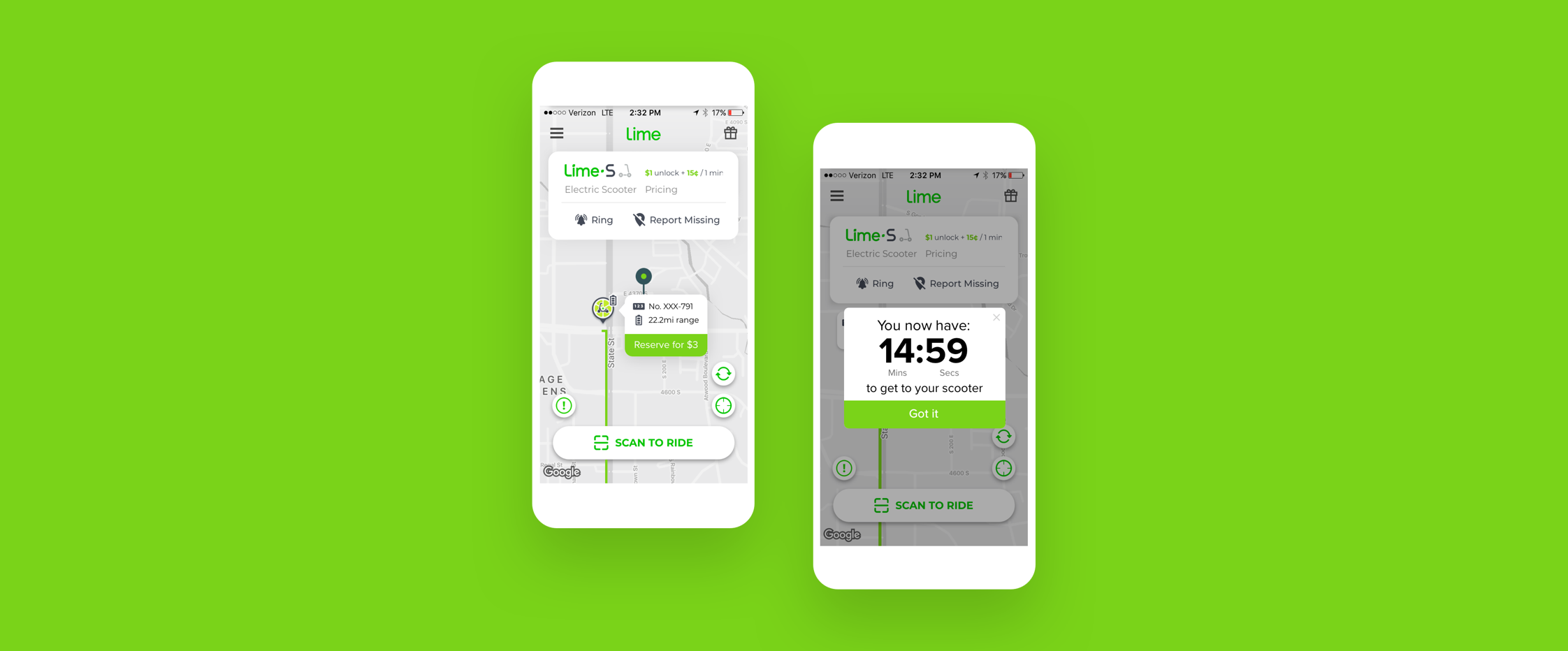
Back to Projects

Lime users in a time crunch have no way of ensuring that a scooter will be available to rent after investing the time and energy of walking to it.
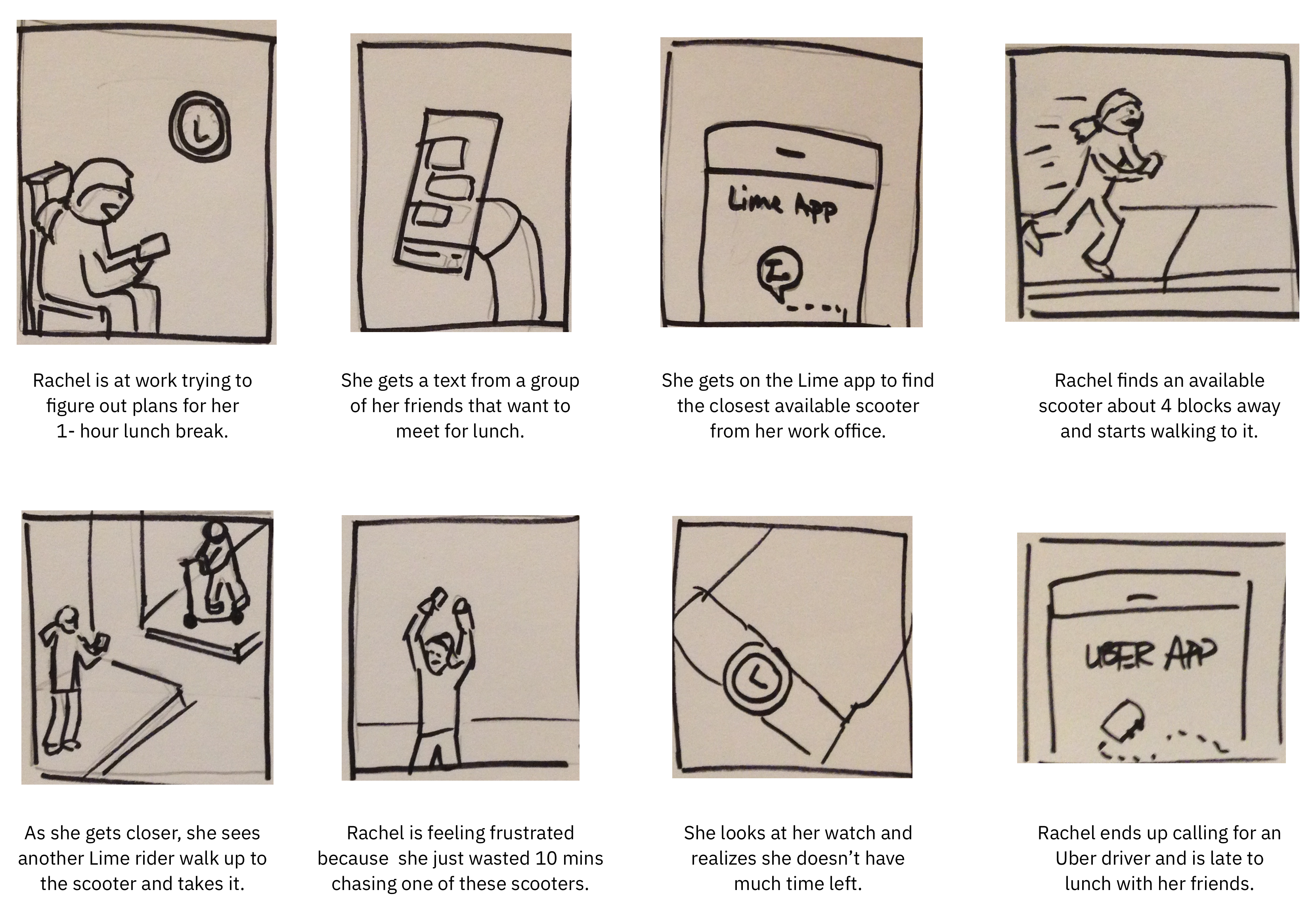
A feature within Lime that allows riders to reserve a scooter when they are 0.5 miles from their selected scooter for a certain price.
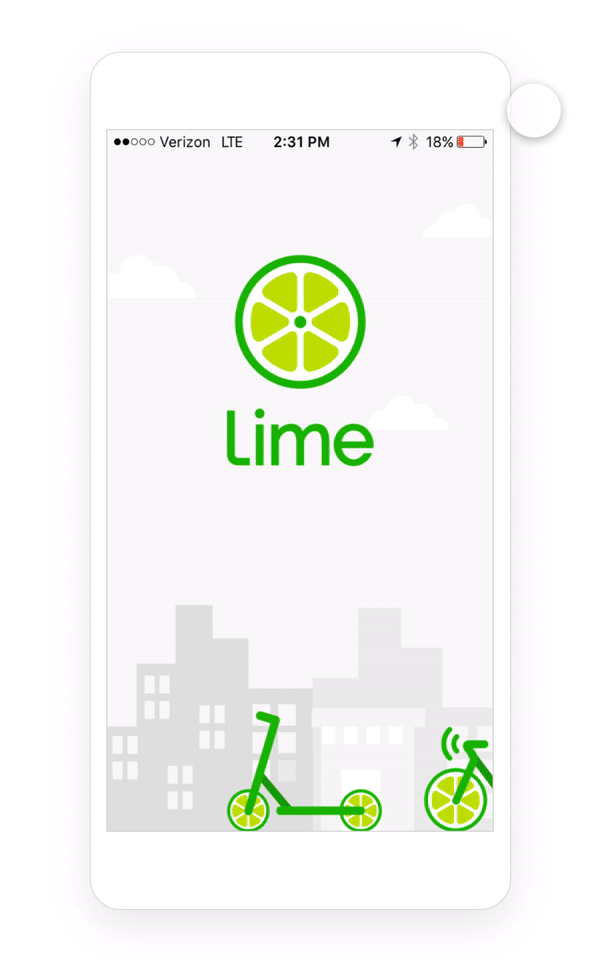
During my time commuting to and from my internship last summer, I faced the problem explained above while using Lime’s scooter service. This personal customer pain point, left me with disappointment and distrust in the scooter service.
Before diving into any problem, I believe it’s important to state a problem hypothesis and then test it. Testing a problem hypothesis allows me to develop a deep understanding of the problem, discover implications, and see if it’s worth solving in the first place.
I believe Lime users distrust the service due to the app's inability to ensure that a scooter can be available after a user invests time and energy walking to it.
When I developed this hypothesis, I asked myself the following: what kind of data do I need to test this hypothesis? Where can I find quick customer feedback data? Where will I find users to validate my ideas?
Due to the lack of access to Lime’s user research or quantitative data, I went to the app store reviews to find out if other users recognized this as a problem. This allowed me to get quick data about users without investing time & energy into recruiting users and interviewing users. I audited over 200 reviews and found that many negative reviews mentioned this problem.

During my research, I also found a survey conducted by Lime in San Francisco. This survey showed that 55% of Lime users use the service for commuting. This data made me feel confident that Lime users need dependable transportation if they are commuting.
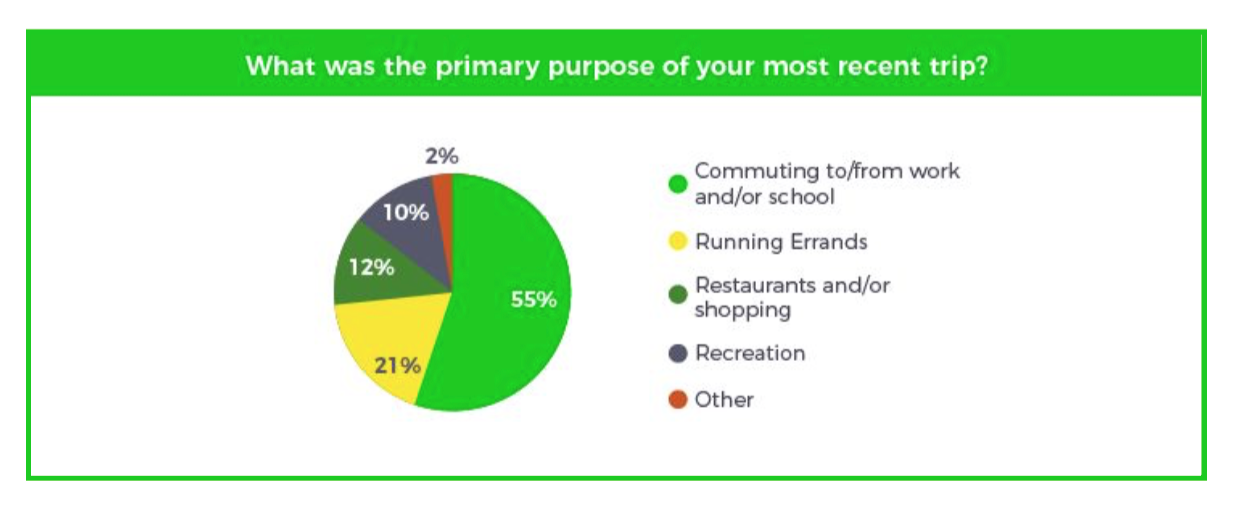
After looking through the reviews and survey, I felt that it was time to interview a few Lime users to understand use cases and implications. I recruited 6 Lime users through Facebook and Linkedin. Of the interviews, two were face to face and four were over the phone. During the interviews, I asked questions like “Tell me about your experience using Lime,” “Do you ever use Lime to commute to work or school?” “During your last ride, about how far would you say you walked to get to your scooter?” and “Have you ever had a hard time locating a scooter?”
Based on my research, I feel confident that there is a recognizable amount of distrust in Lime’s most important customers - the commuters. These customers are using Lime day in and day out. If we solve this problem, fewer customers will likely leave to competitors (Uber or Lyft) and customer trust will increase.
Help customers feel confident that they can get to where they need to go.
The solution should be seamless and easy to use.
For me, it is important to have a persona because it allows me to bring the target user on the journey of designing a solution. Developing this persona helped me to refer back to the thoughts and feelings Lime users had when I interviewed them.
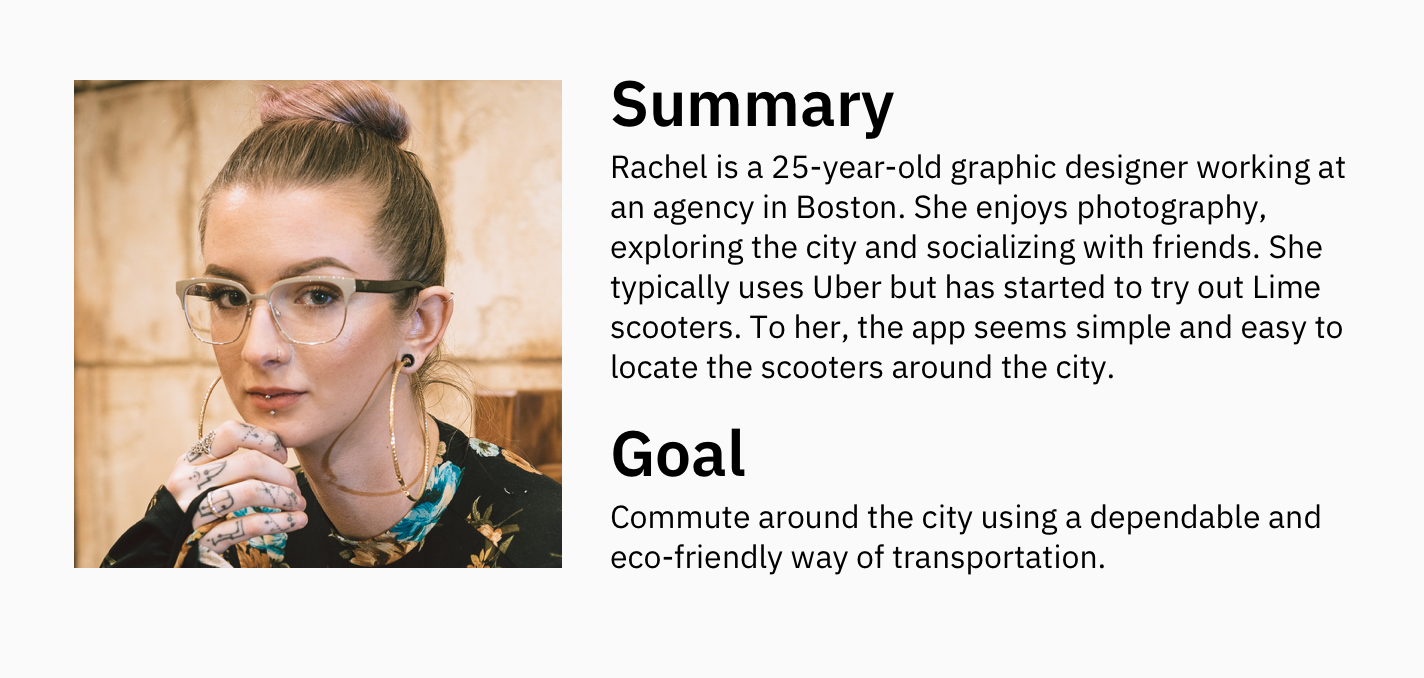
Laying out the user journey map enables me to see the full experience rather than a few pain points. As I build a journey map, I like to focus on potential opportunities to improve the user experience. I based this journey map off a specific use case explained by a Lime user I interviewed.
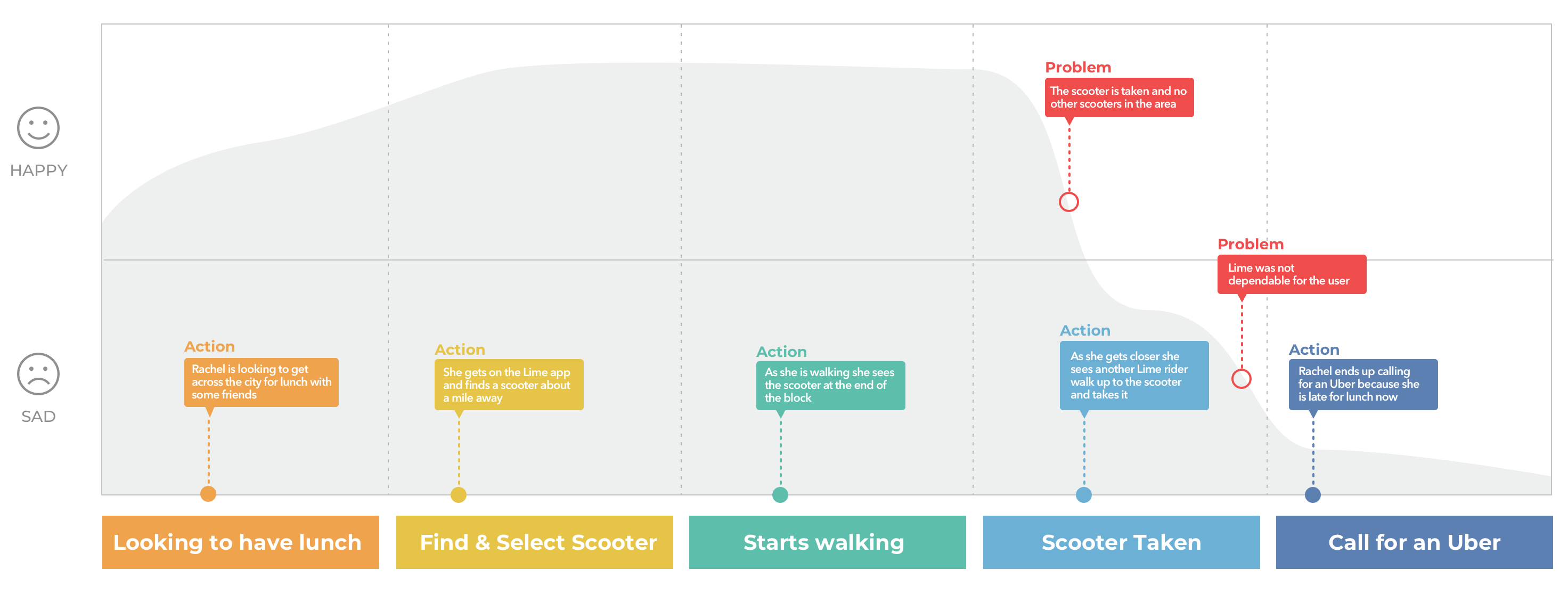
After understanding the users & problem deeper, I wrote down as many ideas as possible (even the crazy ones) on a whiteboard to help me think of different ways to solve this problem. I also went through multiple revisions of different "How Might We" questions to help to me have a clear understanding of the problem I was solving.
After generating a few ideas, I selected 3 ideas to explore in more detail. Below I talk about the pros & cons of each idea:
This idea would build a sense of urgency for users, allowing them to know if there are others that may want to use the same scooter.
Go back to the goal of increased trust, this idea doesn’t build trust. Technology allowing users to see other users activity would be difficult to build and doesn’t solve the underlying issue of lack of trust.
This idea would allow users to feel more confident using Lime because they would be guaranteed a scooter if they can find one on the map. This would also help build trust in Lime as a dependable form of transportation.
A reservation feature could cause confusion and frustration to other users.
Quick and easy to implement.
Other scooter competitors could simply release more scooters in a city. This idea seems more like a band-aid solution then a really way to solved customer needs. Add more scooters to a city would be expensive.
I feel like there are a few main value propositions for the business and the end customer:
For me, storyboarding is an important part of my UX process. This step allows me to visualize how an idea could interact in a users context.

Anyone can come up with an idea and think to themselves "this idea is great, now let's move on and test it."To get out of that mindset I write down 'Things to consider.' When I break the idea down and question it's value, I can often find small issues that need to be addressed. Here are a few of those 'Things to consider:'
Currently, Lime scooters cost $1.00 to unlock and $0.15 a minute to continue riding. If the rider can reserve the scooter from 0.5 miles away then the price of the reservation depends on how long it takes the rider to get to the scooter. If the average rider takes 15 mins to walk 0.5 miles to the scooter, then that would cost 15 mins * $0.15 = $2.25. Therefore, a fair price for a reservation could be $3.00. That way the business would make an extra $0.75 per reservation.
During sketching, I was able to explore potential layouts and user flows for introducing the reservation option to users. As I sketched, I determined that there should be two user flows in this feature 1). if a Lime user is already within 0.5 miles from the selected scooter, they will automatically have the option to reserve. In the second interaction 2). the user will be notified with a pop-up once they are within the 0.5 mile radius of the scooter.
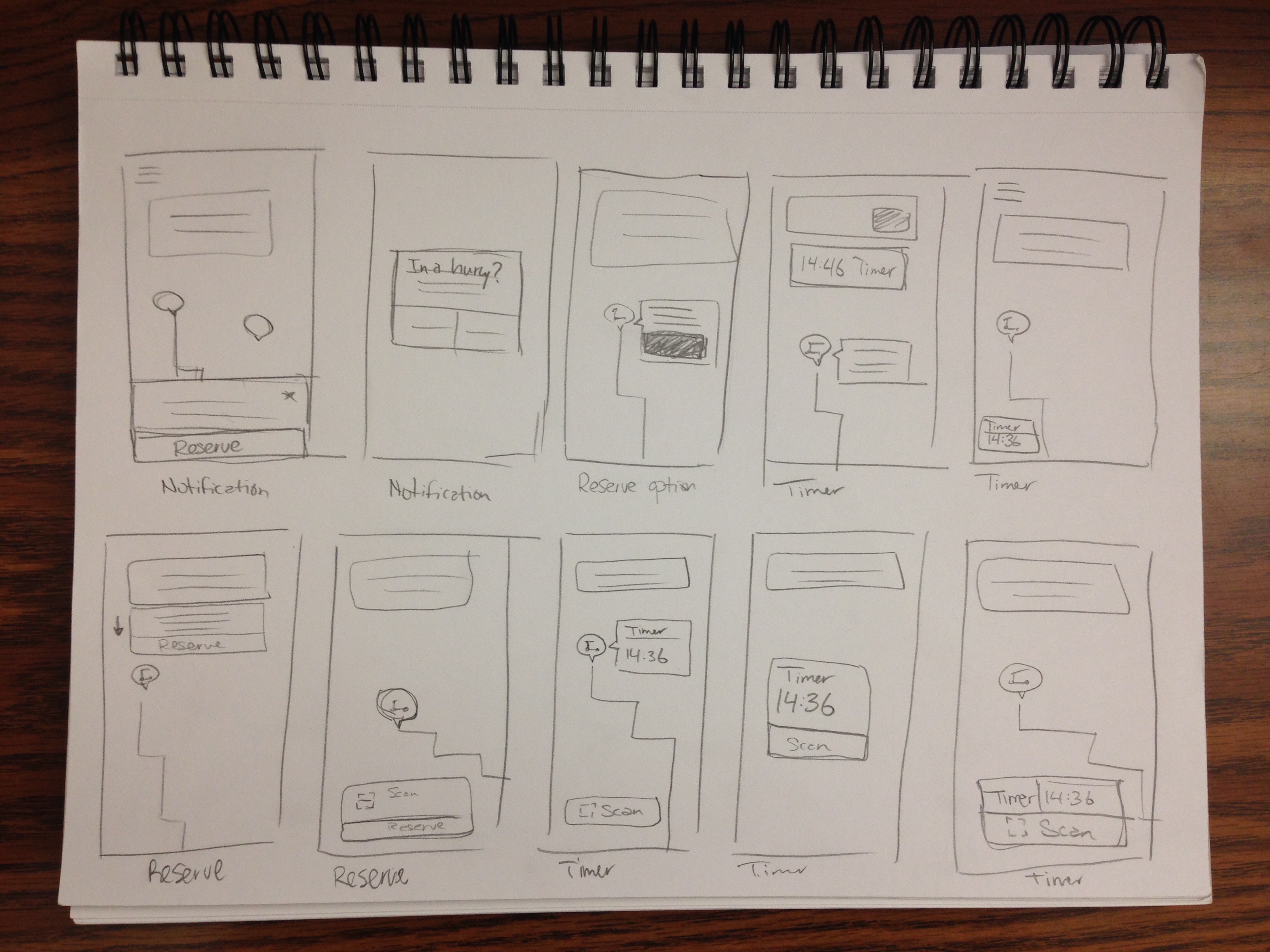
Once I explored different ideas, I wanted to test this idea with Lime customers. I did some qualitative testing with a few screens to test some variations. I then mocked up screens in Sketch to build my prototype in XD. I conducted usability tests with 6 Lime customers.
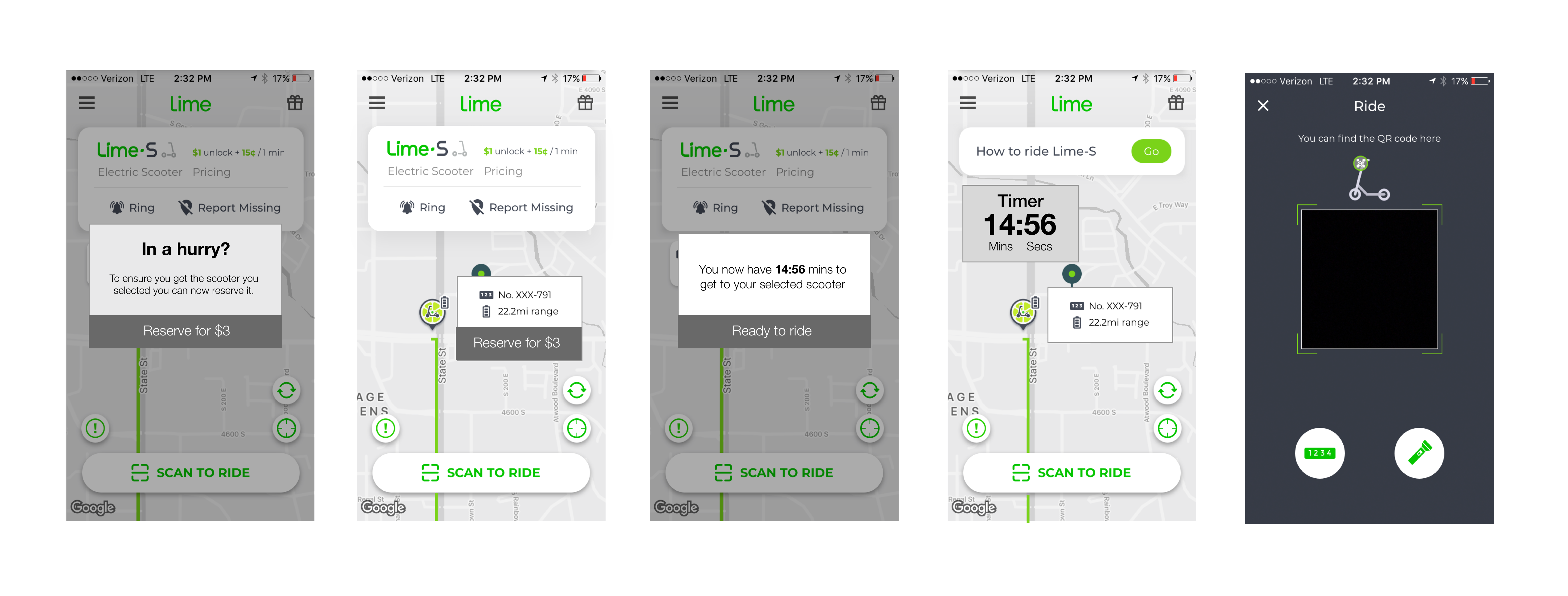
The main usability issue that I found was that the users were concerned that they paid $3 for the reservation but were not notified that there was a time limit.
To help users be aware of the time limit on the reservation feature, I added a first-time feature interaction. This would allow the user to explore the reservation feature for the first time without committing to payment.
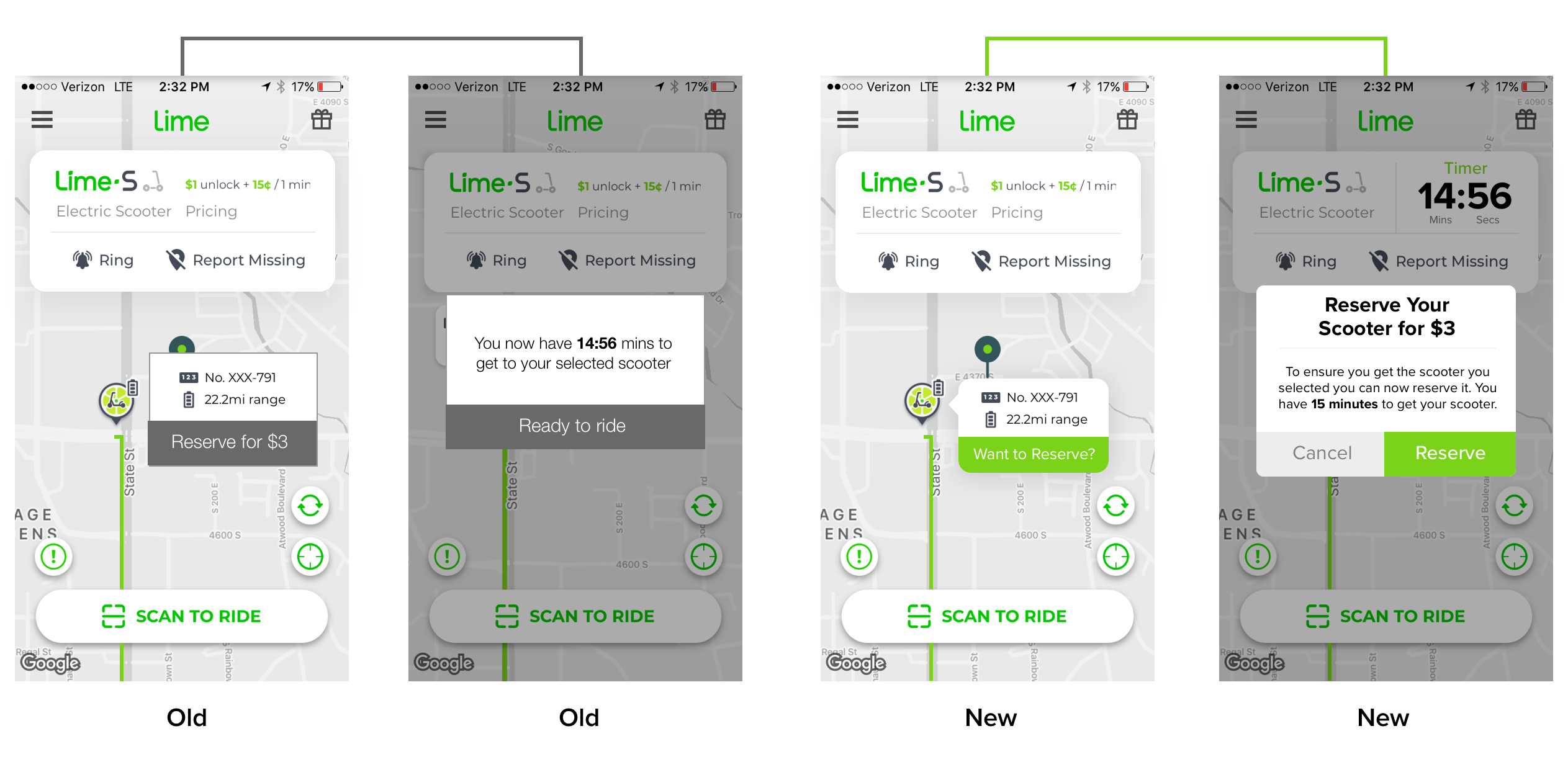
Users wanted access to the “ring” button on the scooter when they were walking toward their reserved scooter.
The ring, or bell button, makes the scooter the user is searching for ring so they can find it easily. Because of this, I incorporated the timer and ring button into the design.
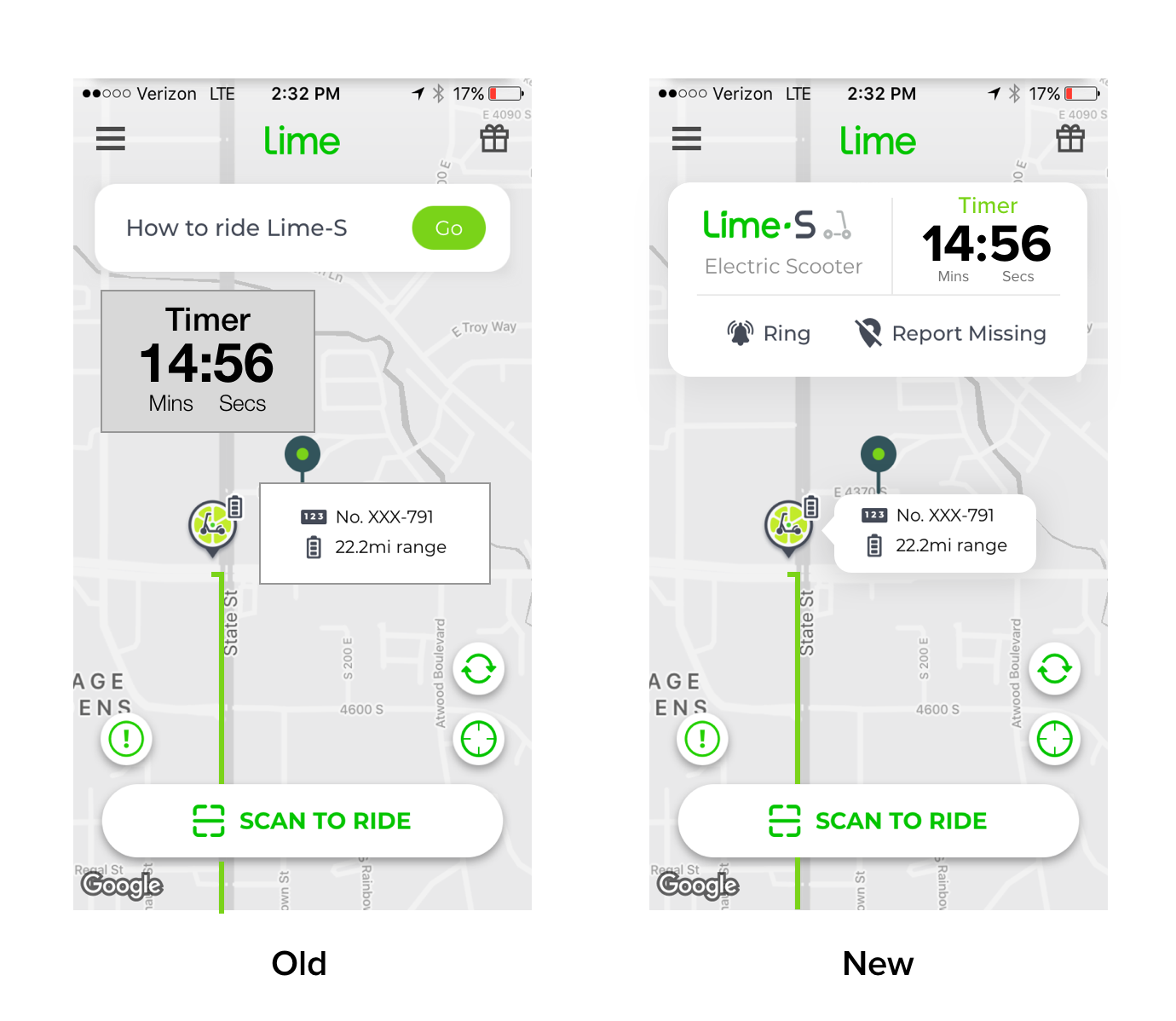
After making some changes to the design based on testing, I presented my prototypes to 3 Lime riders and got the following responses:
This new solution will give Rachel (the persona) a better experience by providing her with a more dependable way of commuting around the city. Rachel will not have to invest time and energy walking around the streets of Boston trying to find a scooter without the assurance that it will still be there when she arrives.
Rachel just received a group text from her friends notifying her that they are meeting up for lunch. She gets on her phone to find a Lime scooter close to her. When she selects a scooter, she discovers a new reservation feature on Lime. Rachel decides to reserve the scooter because she has to get to lunch, eat, and get back to the office in just one hour. As she walks to the scooter, it’s ready for her just a few blocks away and she rides to lunch.
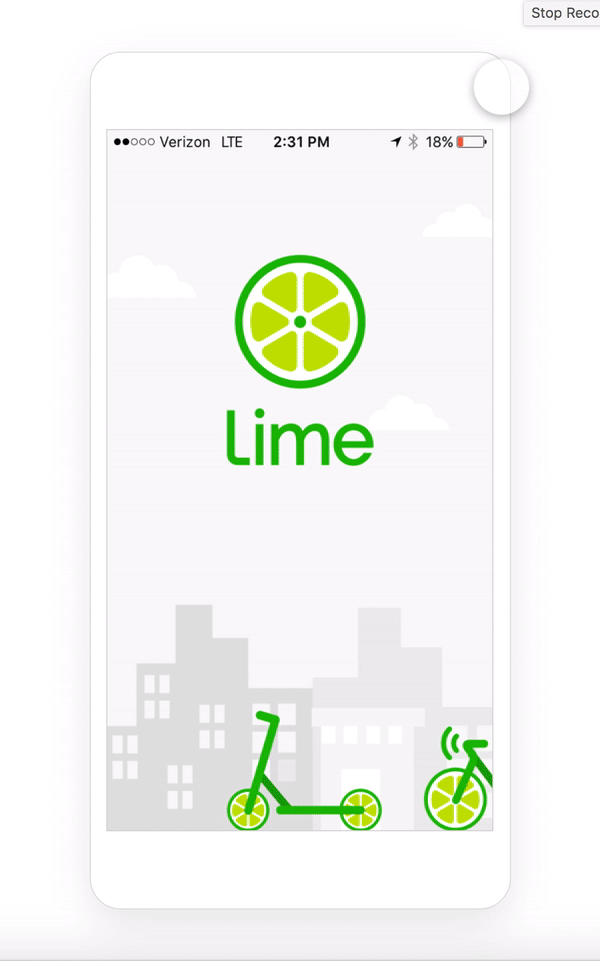

Rachel is now comfortable using the reservation feature - especially when she is in a time crunch. Overall, she trusts Lime will get her where she needs to be.
When Rachel is visiting a new city and doesn't want the reservation feature, she can turn off the feature in the setting pages.
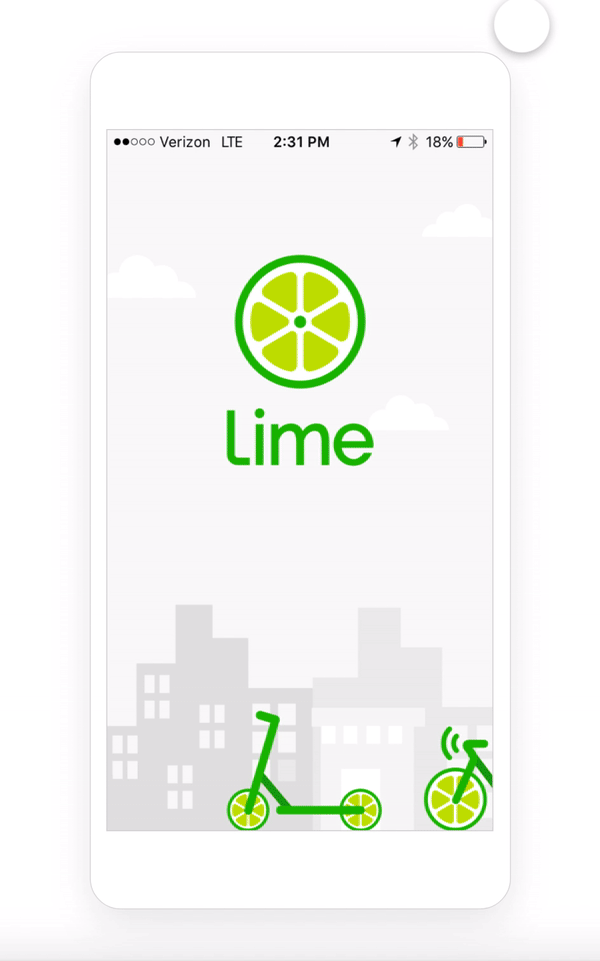
After writing up the case study, I sent my work over to a senior designer at Lime and this is the reply I received:

Next Article